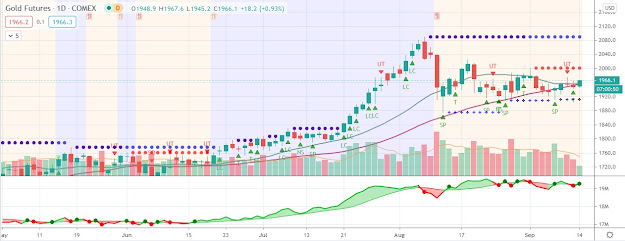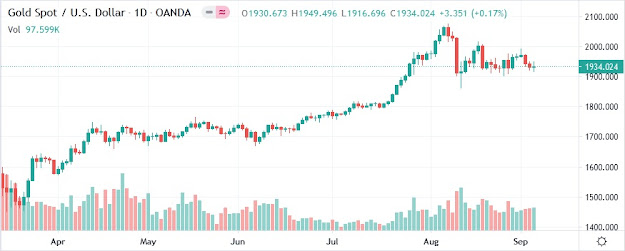Gold typically declines when the major economies are in recession; it happened in 2008
 The gold price dipped Wednesday morning, sliding $28.30 to $1630.40 per ounce on the back of continued liquidation pressures in global financial markets. The 0.5% drop in the price of gold occurred alongside broad-based weakness in commodities. WTI crude oil led to the downside, dropping 2.6% to $75.58 per ounce while copper declined 1.5% to $3.10 per pound. Worries over the prospect of a double-dip recession intensified this morning as the S&P 500 fell into bear market territory, dropping 20% off this year’s high. The flight away from riskier assets such as equities continues to benefit U.S. Treasuries, evidenced by the 10-year yield falling to 1.63% early Tuesday.
The gold price dipped Wednesday morning, sliding $28.30 to $1630.40 per ounce on the back of continued liquidation pressures in global financial markets. The 0.5% drop in the price of gold occurred alongside broad-based weakness in commodities. WTI crude oil led to the downside, dropping 2.6% to $75.58 per ounce while copper declined 1.5% to $3.10 per pound. Worries over the prospect of a double-dip recession intensified this morning as the S&P 500 fell into bear market territory, dropping 20% off this year’s high. The flight away from riskier assets such as equities continues to benefit U.S. Treasuries, evidenced by the 10-year yield falling to 1.63% early Tuesday.Despite Monday’s rally, the spot price of gold remains 14.0% below its $1,922.20 all-time high. Commenting on the gold price weakness, Dundee Securities chief economist Dr. Martin Murenbeeld wrote in a note to clients that “Gold typically declines when the major economies are in recession; it happened in 2008 and it happened in 1974-75 when the second-worst post WW-II recession hit. Gold was in a major bull cycle in the 1970’s (a cycle which ended in the second half of 1980 when Fed Chairman Paul Volcker pushed interest rates to record highs). But the 1974-75 recession caused gold to pull back 47% peak to trough, smack in the middle of that cycle.”
Murenbeeld went on to say that “We do not believe this cycle is finished for gold. We do however think that gold will now require some help from European (and US policy) to move significantly higher again.” As for specific policy measures, Murenbeeld predicted that there is an 80% chance Europe will “cobble together” a more robust set of measures to combat the sovereign debt crisis.
One alternative would involve levering up the European Financial Stability Fund (EFSF) in order to provide substantially more financial assistance to troubled euro zone nations and the European banking system. Although he did not suggest a particular size, Murenbeeld noted that last week that the price of gold jumped amid rumors that the EFSF could be expanded to €2 trillion. Given that such a move would inherently involve significant amounts of fiat money creation, Murenbeeld contended that the gold price would clearly be a prime beneficiary of such actions.



Comments
Post a Comment